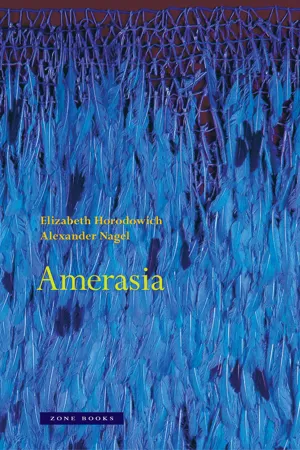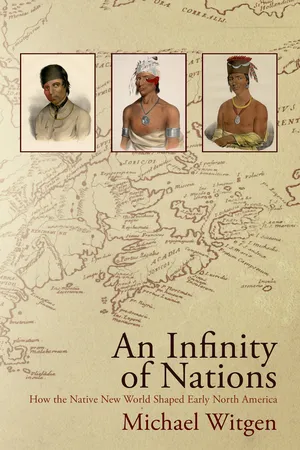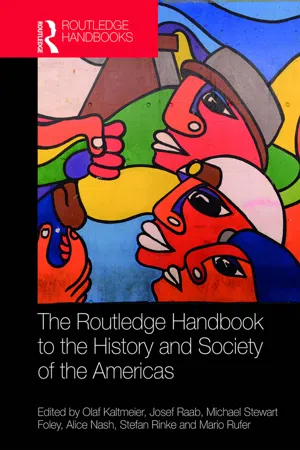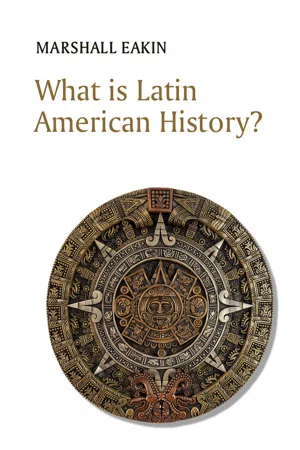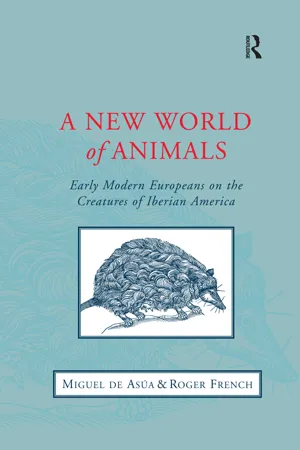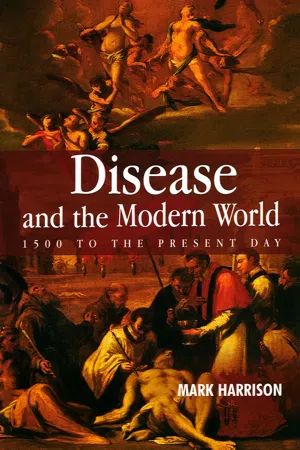History
The New World
"The New World" refers to the Americas, which were discovered by European explorers in the late 15th and early 16th centuries. This discovery led to the colonization of the region by European powers, resulting in significant cultural exchange, the spread of diseases, and the exploitation of indigenous populations. The encounter between the Old World and the New World had profound and lasting effects on global history.
Written by Perlego with AI-assistance
Related key terms
7 Key excerpts on "The New World"
- eBook - ePub
- Merry E. Wiesner-Hanks(Author)
- 2021(Publication Date)
- Polity(Publisher)
Reflecting the emphasis on the interconnections between Europe and the rest of the world, over the last several decades a number of historians of the early modern period have increasingly defined their geographic area of focus not as a single nation or region, but as the “Atlantic world.” This Atlantic history, championed by Bernard Bailyn, Jack Greene, and others, developed to some degree because of political circumstances after World War II that linked North America more closely with Europe. (The same circumstances led to the founding of the North Atlantic Treaty Organization – NATO.) More importantly, however, scholars increasingly found that telling the story of the lands that bordered the Atlantic and the islands that were situated in it separately was not as interesting as telling a story that tied them together. The Atlantic first emerged as a coherent region in 1492, and never completely disappeared, but by the nineteenth century the region was being drawn more fully into global patterns of production, migration, imperialism, and trade. Thus the “Atlantic world” really is an early modern phenomenon.Atlantic world history examines connections and commonalities, and has paid particular attention to certain topics, including voluntary and forced migrations (especially the slave trade), the movement of commodities, the establishment of empires, the spread and hybridization of ideas, and racial and ethnic relations.4 It has been shaped by every trend and turn that has affected the history of early modern Europe discussed in previous chapters. It is often still divided by language, though more comparative work is now being produced. It has become progressively more interdisciplinary, incorporating methods and evidence from the natural as well as the social sciences. Atlantic world history initially focused primarily on Europeans, but has increasingly emphasized the role of Africans and peoples indigenous to the Americas. The Afro-British cultural historian Paul Gilroy, for example, proposed the concept of a “Black Atlantic” in 1993 to describe a space that transcended nationality and ethnicity and was essential in the creation of the modern world.5 Building on decades of scholarship on the significance of Native Americans in the Atlantic world, Jace Weaver has recently adapted Gilroy’s idea to posit a “Red Atlantic.”6Explorations and exchanges
The traditional description of what Columbus did was “discover America,” or “discover The New World.” Both “America” and “New World” derive from someone other than Columbus, of course, who never admitted he was anywhere new. The phrase “New World” was first used in 1505 by the Florentine explorer Amerigo Vespucci, who described (and enhanced) his role in several voyages in published letters to the Florentine statesman Piero Soderini. These were read by many people across Europe, including the German mapmaker Martin Waldseemüller. In 1507, Waldseemüller printed a globe and a huge map on which he showed the land mass across the Atlantic from Europe unconnected to anything else, and gave it the name America, taken from the Latin form of Vespucci’s first name. By just a few years later, mapmakers – including Waldseemüller – and others knew this was wrong, and that Columbus had reached the continent before Vespucci; they wanted to omit “America” from future maps, but the name had already stuck. - eBook - ePub
- Elizabeth Horodowich, Alexander Nagel(Authors)
- 2023(Publication Date)
- Zone Books(Publisher)
17Reviewing the early modern travel-writing genre, the historian Joan-Pau Rubiés observed that the idea of The New World “included most of Asia, no less than America, given that much of the East had been equally ‘newly found’ by European navigators.”18 In his world map of 1538, Gerardus Mercator first placed the word America on what are today North and South America, yet the older understanding of new worlds persisted in maps, cosmographies, and histories even into the seventeenth century; indeed, in Mercator’s own even more influential 1569 map the term America disappears from the new landmasses, replaced by India Nova (see chapters 11 and 12 ).19 In his 1604 account of the Portuguese voyages around the coast of Africa to the Malabar Coast of India and on to Malacca, China, and Japan, the Italian Jesuit Giovanni Pietro Maffei uses the term new world to refer to India.20 Similarly, the Venetian Doge Leonardo Donà (1536–1612) catalogued accounts of both American and Asian travels under the title Del Mondo Nuovo.21 In his Discours de la nature et des parties du monde (1587), the French poet and philosopher Pontus de Tyard explicitly defines the “new world” as any and all lands unknown to the ancients. With some originality, he gives the lands ranging from Labrador above the arctic circle through New France (Canada), Florida, New Castile (Mexico), Panama, Brazil, and Peru down to the strait of Magellan the label “new Asia” (la nouvelle Asie), which extends across the South Sea to the China Sea, where the “old Asia” begins.22 The automatic identification of the term new world - eBook - ePub
An Infinity of Nations
How the Native New World Shaped Early North America
- Michael Witgen(Author)
- 2011(Publication Date)
- University of Pennsylvania Press(Publisher)
The stories of La Malinche, Pocahontas, and Onontio are meant to explain the new human geography created when peoples of the Americas like the Anishinaabeg and Dakota came into contact with the peoples of Europe, Africa, and Asia. This encounter unfolded from the moment of first contact across a transoceanic circuit that began a new and worldwide system of exchange, circulating people, plants, goods, and ideas in a way that would transform humanity. This process created a unique social system that scholars identify as the Atlantic World.The geographer D. W. Meinig has described the Atlantic World as a place of dynamic interaction, rather than as a site of transfer where people and things moved from one hemisphere to another. Meinig argues that the discovery of the Americas was, more accurately, “a harsh encounter between two old worlds that transformed both and integrated them into a single New World.”2 The Atlantic World in this conceptualization emerged as a site of encounter, a transoceanic network that we can envision, in his words, “as a single vast spatial system.”3 This singular geographic field was rooted in Europe, but expanded relentlessly into African and American hinterlands. Native peoples became a part of this emergent imperial social formation, but they were locked in a system where meaning and order were determined by colonial powers with homelands in Europe. In effect, Meinig imagines The New World as a multifaceted spatial system created by the encounter and integration of the different peoples of the Atlantic World.Thinking about the Atlantic World in this way has enriched our understanding of the history of encounter in the Americas. It is far better than simply imagining encounter as Europe’s discovery of an undeveloped, primitive world. Nevertheless, Meinig still imagines The New World as the periphery to a European core, where social and political systems operate along a spatial axis between a European homeland and Indian country, essentially signifying the developed and underdeveloped, and more importantly dominant and subordinate worlds.4 - Olaf Kaltmeier, Josef Raab, Mike Foley, Alice Nash, Stefan Rinke, Mario Rufer(Authors)
- 2019(Publication Date)
- Routledge(Publisher)
The discovery opened up completely new spaces (→ Atlantic, I/3). Soon, it was even proved that one could sail around the earth, which provided the basis for a new consciousness of the world. In 1492, the newly discovered territories, as a new continent, started an exchange with what had suddenly become the “Old World,” which, in turn, established increasingly more networks. There were transatlantic processes of exchange that assumed global dimensions. Europe rose from being an appendix of the Eurasian land mass that had been insignificant in terms of world history to becoming “the West,” which could subsequently set standards (Abellán 2009, 13).European empires became the colonial masters of alien and far remote peoples (→ Conquest and Colonization, I/7), whom they oppressed and exploited in a bloody manner (→ Colonial Rule, I/5, Unfree Labor, I/19). Economic ties (→ Colonial Economies, I/4) made possible trade with alien goods, some of which fundamentally changed ways of living. The migration (→ I/15) of people from different continents – some voluntary, much of it forced – gave rise to a new kind of population (→ Hybridity, I/30). Women were generally kept in subservient roles (→ Gender, I/9). With the people came animals, plants, and germs (→ Columbian Exchange, I/6). As Europe was seizing America, Christianity spread as a world religion and made some advances in the competition with Islam (→ Religion and Missionizing, I/17). The interactions changed not only those directly involved in them. It is beyond doubt that from a European perspective, the Day of Guanahani was a turning point in history.But was this also true for the “discovered,” who, in contrast to Columbus, did not leave any written records of the events? It is not only because of the issue of missing written sources that the indigenous peoples were regarded for centuries merely as passive objects of European action and did not have their own voice. In a way, they were taken to be part of the wilderness which was to be pushed back. It was a crucial component of their new view of the world promoted by the discovery that Europeans now saw themselves as the center and masters of the world (→ Memorial Culture, I/14).- eBook - ePub
- Marshall Eakin(Author)
- 2021(Publication Date)
- Polity(Publisher)
Perhaps the most creative and expansive approach that has both revitalized and challenged the field of Latin American history over the past three decades is Atlantic world history. Like the borderlands, it is an approach that has a long history that recent historians have revised and transformed. In a very basic sense, much of the colonial history of Latin America is by its very nature transatlantic, imperial history. The classic works of the Chaunus and Earl Hamilton, in economic history, and the early histories of colonial administration were often topics that spanned the Atlantic Ocean. In the 1970s and 1980s, Bernard Bailyn (1922–2020) at Harvard University and faculty at the Johns Hopkins University developed programs and publication series on Atlantic history. Atlantic world history as a self-conscious and innovative approach begins to emerge full blown in the 1990s and has attracted historians on both sides of the ocean, North and South, although most of the work has been done by historians based in the United States.At its best, Atlantic world history has forced us to rethink old problems, categories, and connections. At its most mundane, historians of empires, colonization, or specific locales simply claim an Atlantic orientation while going about their work much as historians did before the emergence of this new approach. As Alison Games has pointed out, much of the research has offered up “a history of places around the Atlantic versus a history of the Atlantic.”12 The challenges of writing truly Atlantic-centered history is daunting, given the four continents and thousands of languages, cultures, and polities connected to this immense ocean over multiple centuries. As with borderlands history, the field has attracted critics who question the validity of the conceptualization and boundaries, both spatial and temporal.Most scholars would probably agree that the Atlantic world begins to take shape in the fifteenth century with European voyages, first down the coast of Africa, with the key moment being the arrival of Columbus in the Caribbean in late 1492. Over several centuries, the movements of peoples across the Atlantic from north to south gradually connected all four continents. More debated is the other end of the timeframe. Most of the work in the field focuses on the colonial era into the nineteenth century. For some, the rise of nation-states between 1776 and the 1830s marks the end of their Atlantic world and the beginning of a more global era. For others, the end of slavery – 1830s in the British Caribbean, 1860s in the United States, and 1880s in Cuba and Brazil – serves as the inflection point. Although some have invoked the terminology for the twentieth century, most working in the field would see the Atlantic world as a historical approach and era stretching from the fifteenth to the nineteenth century. - eBook - ePub
A New World of Animals
Early Modern Europeans on the Creatures of Iberian America
- Miguel de Asúa, Roger French(Authors)
- 2017(Publication Date)
- Routledge(Publisher)
Chapter 3The New Histories of The New World
So far we have explored a few accounts by the actors in the experience of the discovery, conquest and settlement of America. But in the course of the sixteenth century this vast historical process was also translated into political and military narratives ultimately aimed at discussing the political rights of the Indians, glorifying the exploits of a given conqueror or eulogizing the whole enterprise of imperial Spain. Some very significant works, such as Bartolome de las Casas’s History of the Indies and Brief Apologetic History (Apologética historia sumaria) were not published until the nineteenth and twentieth century; Díaz del Castillo’s True History of the Conquest of New Spain was edited in 1632 and Ginés de Sepúlveda’s De orbe novo went through the presses by the end of the eighteenth century. The Spanish crown followed a fairly consistent policy of treating any kind of information about the Indies as a state secret, which may account in part for the fact that many works remained for centuries in manuscript form. Thus the few major treatises on The New World made available to contemporary readers in the course of the sixteenth century became a source upon which many authors drew for compilations and much work that was derivative in nature.The Decades of The New World, a collection of letters written by the Italian humanist Peter Martyr – who personally knew many of the protagonists of the enterprise of the Indies – was one of these contemporary sources. The passages in which Martyr talks about the new animals were eagerly quoted, plagiarized and held as truth for two centuries, no matter how fantastic some of them were, judged by contemporary standards. But people who had a serious interest in plants and beasts in the Indies read Oviedo and Acosta, those two stout, ponderous pillars upon which much of the early modern knowledge of American nature was built. Oviedo’s Natural and General History of the Indies and Acosta’s Natural and Moral History of the Indies were the scholarly and authoritative works on the subject. Moreover, these authors established a new genre of writing: ‘natural and moral’ or ‘natural and general’ history. The works of Oviedo and Acosta cover at the same time the world of necessity (the natural world) and the world of free will (the human world). Notwithstanding some antecedents, the idea of encompassing in a single embrace both dimensions was uniquely associated with the discovery of America. As an answer to the challenge of conveying the whole reality of The New World to contemporary readers, Oviedo and Acosta articulated natural and political history in works of sweeping scope. In doing so, they brought together the two senses of the Latin historia:as an inquiry into unusual things – a meaning manifest in Aristotle’s Historia animalium and in Pliny’s Naturalis Historia – and as a record of past events, in the sense of the Ciceronian vita memoriae or the medieval account of res gestae. - Mark Harrison(Author)
- 2013(Publication Date)
- Polity(Publisher)
4 The World beyond EuropeNew World peoples, Old World diseasesThe world that emerged from the Renaissance and the Reformation was a world that looked increasingly to the future. Though scholars and statesmen still revered Classical civilization, they looked forwarded in confident anticipation of progress. They looked increasingly beyond Europe, too. The rise of the West depended very largely on its willingness to seek out, and ultimately to control, new lands, commodities and peoples.1 In the process, Western medicine was confronted with new challenges and opportunities, in the forms of disease and medicinal plants. And with the movement of peoples came the passage of microbes, hastening what Emmanuel Le Roy Ladurie has described as the ‘unification of the globe by disease’.2 But while germs were distributed far more widely than before, the burden of disease was far from equal. Long exposure to infections like smallpox and measles gave Europeans an immunity that the peoples of America and the Pacific lacked. In the Old World there were more domesticated animals, which acted as reservoirs of infection, and all the key centres of population had long been joined by trade, which ensured regular mixing of germs.3 Once Europeans landed in The New World, Old World infections spread rapidly and fatally among the local inhabitants, leaving Europeans relatively unscathed. Spanish censuses and tax surveys suggest that the indigenous population halved within two decades after the first reported epidemics.4The best-known account of these epidemics is Alfred W. Crosby’s book, The Columbian Exchange (1972).5 Crosby argues that the importation of lethal pathogens was one aspect of a process of ‘ecological imperialism’ that allowed white settlers rapidly to attain dominance over Native Americans.6
Index pages curate the most relevant extracts from our library of academic textbooks. They’ve been created using an in-house natural language model (NLM), each adding context and meaning to key research topics.

